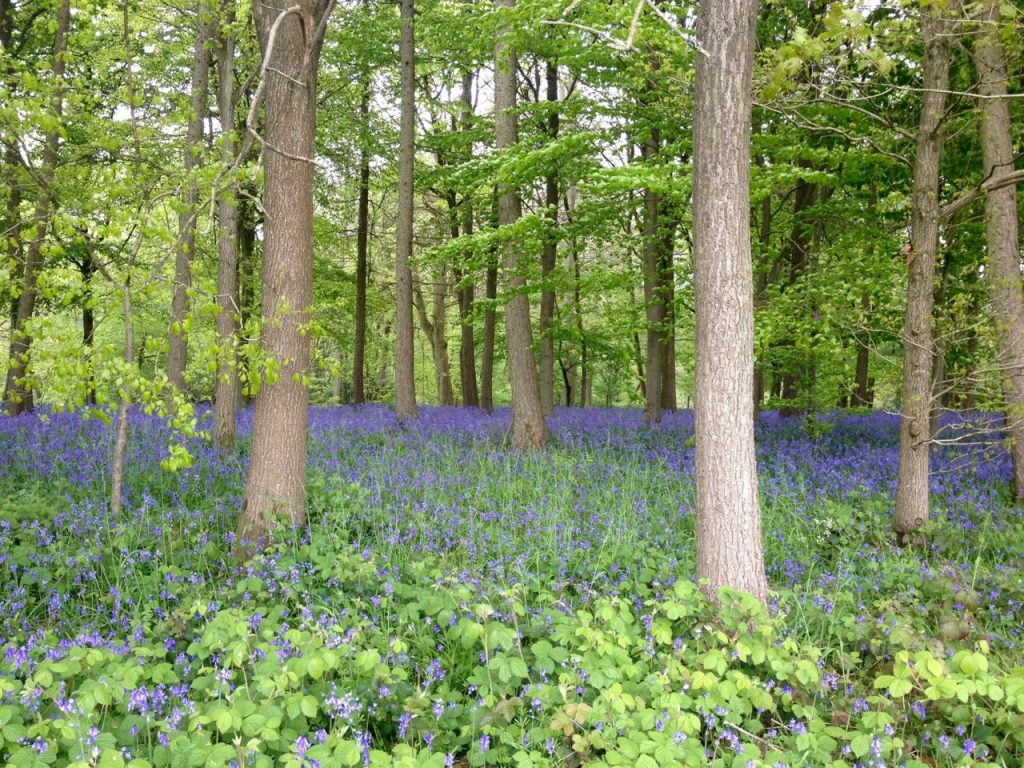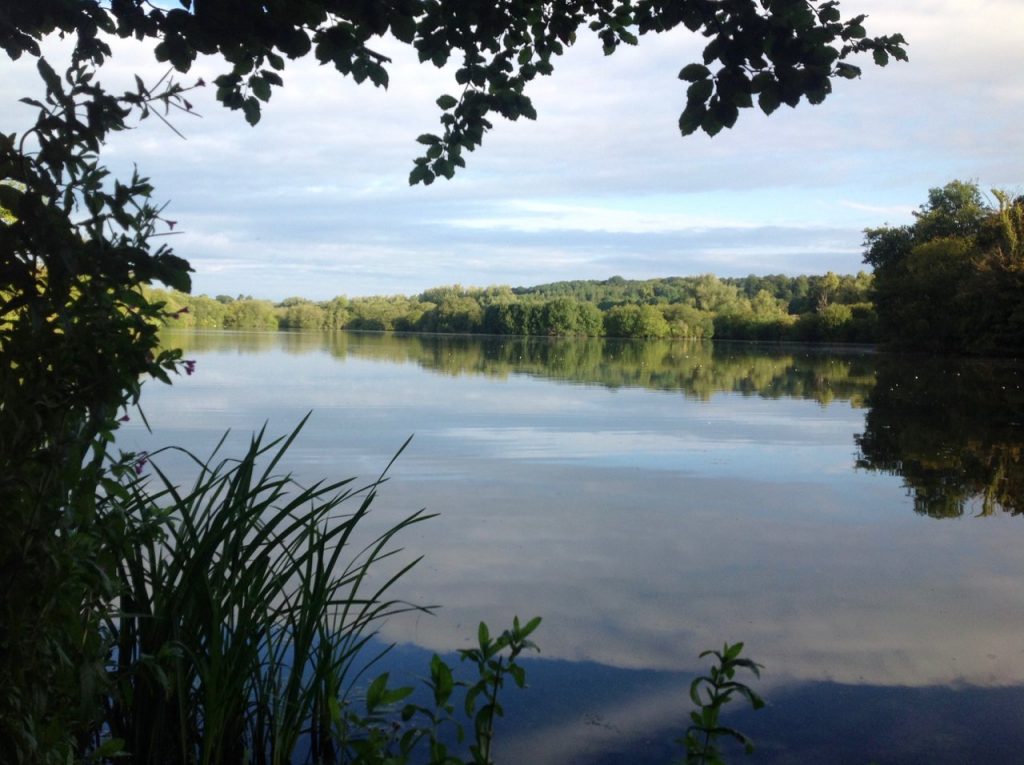Five years ago Sir John Johnson wrote two articles about spring and summer walks around Amersham. Both were published in the Society 2014 Newsletters under the common name ‘Amersham Country Diary’. Today we are releasing them online to share Sir John’s passion for the countryside and to encourage people to take up walking.

AMERSHAM COUNTRY DIARY
The inveterate walker, Sir John Johnson waxes lyrical on spring in and around AmershamToday, at the end of March, is for rejoicing. It is a fine morning in Old Amersham and the Misbourne Valley. From the front of our house I see old gables, many painted white, tiled roofs and tall chimneys. The houses, pubs and shops, and the Market Hall donated to the town by the squire in 1682. From the back the flint and brick Church Hall with bricked in windows used to be part of Wellers Brewery. Way above that is the splendid Rectory with its grass slope closed off by a new brick wall. Before the wall was built we used to toboggan down the slope in winter. And now the Rectory is a private home. What would Trollope say about that?
Enough of the town which all of you know well. But not everyone knows the valley. At present the river is purling along and we are assured of its flow for a year or two. It is not always so: in the 1990s it was often dry and for four consecutive years in the late 1940s according to the old-timers. Walk from St Mary’s church along School Lane, and try and get as far as St John’s Church via the valley footpath. School lane was once the way out of the town for carts, horses and pedestrians. The coaches used the turnpike, and so can you if you follow the less interesting route out of the town on the main road.
On yesterday’s walk, once I had left the finches, tits and robins in our garden, I saw two early butterflies, a brimstone, and a peacock and bees. Best of all, the banks of the road are bright with the yellow stars of lesser celandine and dandelions. It is worth stopping to look up to the south slope of the valley to the wide spaces of arable fields, alive with skylarks in spring and summer.
The prize of red kites in the valley is the result of co-operation between the RSPB, English Nature and The Chilterns Board to restore this elegant scavenger to England by bringing in birds from Spain in the late 1980s. It has been a big success and the Chilterns have not only bred many of these birds but have supplied new breeding populations in other places including the Midlands and Weardale.
The most impressive section of the walk begins at the drive to Shardeloes House which used to be restricted to the use of family and guests. Tradesmen came in from the back entrance and the staff walked from the town down The Platt and across the big field on paths we use today. Shardeloes House, rebuilt and much enlarged in the Palladian style in the mid 1700s. The gardens were modified by Nathaniel Richmond and modified later in the 1790s by Humphrey Repton (Repton’s Red Book is in the family’s new home in Hampshire). He wrote that it should result in a ‘bolder and firmer outline which will give the whole an air of more nature and less Art’. The lake (in fact a dam) is the main source of interest together with the stream and its marshes. The waterfowl change with the seasons but are always a main feature. Gulls predominate from October to March. Noisy Canada Geese crowd the water and the meadows from February to September. Coot are the most consistent residents and grebes are always around. At least five species of duck enliven the lake at various times of the year. Mute swans are the most elegant. The river has the more interesting wildlife. Kingfishers are the most colourful but you will need perseverance and luck to find them. A favourite is the grey wagtail which is frequently seen upstream nearer Kennel Farm. But the whole walk to Little Missenden is full of interest.
The first pub ‘The Crown’ provides congenial company, good food and a fire in winter. The Church to Church walk is about 3 miles, and the walker must look around inside St John’s. Simon Jenkins describes it as surviving ‘rugged with fragmentary traces of ancient wall paintings, the picture book of the medieval unlearned’. The age is a mix of Saxon and Norman like some of our oldest churches. It prides itself on being open most of the day and is welcoming.
If you are in Amersham in April go up the path from St Mary’s and in the lower part of Rectory Wood you will find the loveliest of wild flowers, the white bells of wood anemones, a proof of ancient woodland; and bluebells are coming into flower from Hervines Park across the valley to Mop End.
Sir John Johnson
May 2014 Newsletter

AMERSHAM COUNTRY DIARY
Undeterred by his recent fall, Sir John Johnson reflects on this year’s summer in and around AmershamI am constantly reminded of our network of public footpaths. England used to be a land of villages. Few people travelled far. Most walked. Take a look at the south slope of the valley from the fields beyond School Lane. The paths stand out clearly. Hence our legacy of walks. Even the names of the fields have an historic interest. There is a map in the Town Clerk’s Office of all the surrounding fields with their names.
August may be a disappointing month in the valley. The spotted flycatchers that bring their young to practise catching flies on the willow trees have departed. At first nature seems to be strangely dormant. The larger water birds are on the lake – swans, geese, herons, coot and, a joy to us all, a family of Great Crested Grebe. Smaller birds are moulting and feeding young in the bushes. The new interest comes with a few returning gulls, notably lesser black backed, which return every summer. Smaller birds are moulting and feeding young in the bushes. Robins can be heard in the general silence. A sandpiper came to the lake shore on its migration. In June a grey wagtail nested in the river wall opposite the rectory for all to see. Some are still around the lake on favourite perches. Most of the young swifts left in July to cross the Sahara by instinct alone.
There have been flowers on all the road verges and meadows. Sadly, this year the County Council cut a wide swathe into the vegetation at the by-pass roundabout so there were few orchids in June. Last year I counted more than 30 orchids in the verges. But there are still plenty of flowers in the countryside with white often the main colour. The meadows used to be rich in wild flowers but have been cut back every June and grazed by sheep. That inhibits flowers but produces plenty of hay.
The big change in the valley this year has been a surplus of rain. The flow of the Misbourne from December to January was exceptional and scoured out the river bed. There were no small fry to feed the kingfishers that usually flourish in the little gorge flowing out of the lake. There are now small roach under Mill Lane bridge and a young trout came down from the lake. We can rejoice at the heavy rain in the winter months which should assure us of a good flow for a while. A dry lake and river bed has bedevilled us from time to time.
If you extend the valley walk to beyond Great Missenden’s car park beside the narrowing river to the ‘Black Horse’, where it descends below the road and flows out of Mobwell Pond, a wooded pool which in normal rainfall is the source of the river.
There will be plenty of nature-watching into September. Birds will be well into migration south. Swallows and martins should stop off to feed at the lake. The usual winter range of duck will enliven the lake and the honking Canada geese will leave soon, thank goodness. Gulls will make a mass return from the east coast and stay until March, an ever restless but attractive presence. The other privilege at present is a good crop of blackberries.
Sir John Johnson
September 2014 Newsletter
